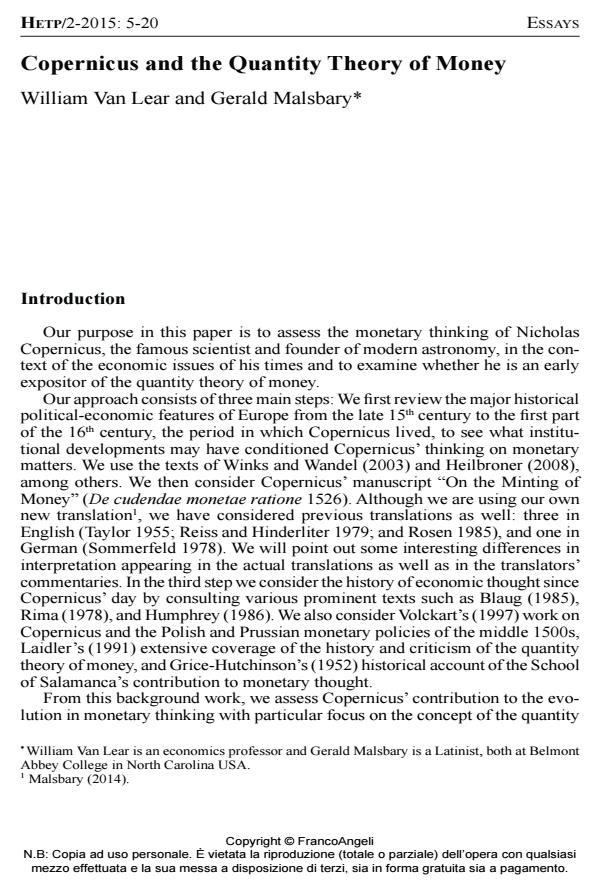Copernicus and the Quantity Theory of Money
Journal title HISTORY OF ECONOMIC THOUGHT AND POLICY
Author/s William VanLear
Publishing Year 2015 Issue 2015/2
Language Italian Pages 16 P. 5-20 File size 211 KB
DOI 10.3280/SPE2015-002001
DOI is like a bar code for intellectual property: to have more infomation
click here
Below, you can see the article first page
If you want to buy this article in PDF format, you can do it, following the instructions to buy download credits

FrancoAngeli is member of Publishers International Linking Association, Inc (PILA), a not-for-profit association which run the CrossRef service enabling links to and from online scholarly content.
This paper examines Nicholas Copernicus’ monetary thinking to ascertain whether he is an early expositor of the quantity theory of money. The paper reviews the historical setting of the 1500s, considers the history of economic thought that pertains to the quantity theory of money, and considers prior translations and interpretations of Copernicus’ manuscript "On the Minting of Money" with our own translation. The paper finds that Copernicus’ monetary thinking is noteworthy for associating monetary policy instability with various economic effects, but he is not a quantity theorist or an advocate of policy positions associated with quantity theorists.
Keywords: Copernicus, monetary theory, quantity theory, metalism, the Great Inflation
Jel codes: B11, B31, N1
William VanLear, Copernicus and the Quantity Theory of Money in "HISTORY OF ECONOMIC THOUGHT AND POLICY" 2/2015, pp 5-20, DOI: 10.3280/SPE2015-002001